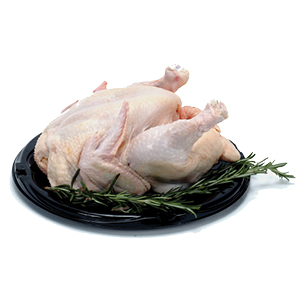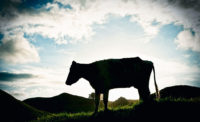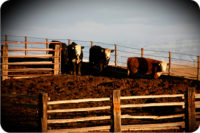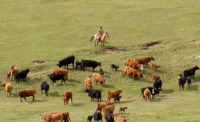
|
I strongly believe there is a gap in our modern animal protein supply chain — an overlooked source of information that, if tapped, could help resolve the sometimes conflicting demands of stakeholders when it comes to animal care. The information I am referring to is individual live-animal measurements during pre-slaughter handling, which would provide the supply chain with powerful tools for creating quality and performance metrics.
Lead the way
We embrace “continuous improvement” in animal care, but we must also actively demonstrate our commitment to producers, processors, retailers and consumers. I have no doubt other individuals and groups will continue to tell us how to do it. Trouble is, initiatives that originate outside the industry focus exclusively on self-defined standards (“perception,” diet, confinement, slaughter method), rather than on outcomes (specific and measurable evidence of improved animal state of being).
In short, the “feel-good” is too often designed for the media or an individual group’s fundraising goals and not necessarily for the animals (or the folks who husband the animals). The public would be surprised to learn there’s no objective evidence that the extra money paid does anything to enhance animal state of being.
“Data up”
We need more data — specific, measurable and verifiable — informing discussions of animal state of being. While struggling with 30- to 40-plus-pound male turkeys the past 20 years of my life, it had always occurred to me that we could make the arduous task of turkey loading easier on us and on the turkeys.
About 10 years ago, I observed a custom grain-handling apparatus that removed corn stored in a silica sand mine using a unique telescoping conveyor belt. I realized a similar conveyor could load turkeys, hands-free.
So we got to work, and after our second prototype, we had a viable automated turkey loader that our family farm continues to use today. We’re now working on constructing even more comprehensive technologies to assess individual turkeys during both loading and unloading.
These live-animal measurements will provide dispassionate data about our quality and performance — and a common-sense foundation for decisions about animal state of being by producers, processors, retailers and even consumers.
Reject false choices
Some will argue you can’t be “big” and humane; others will contend we can’t worry so much about animal care and still maintain efficiencies. I don’t buy either argument.
I’m confident we can work toward verifiable improvements in animal state of being and other performance outcomes that support our shared priority of maintaining an efficient and affordable protein supply chain. Economies of scale provide affordable, plentiful meat to millions of consumers. Our model should not be dismantled, but continuously examined for potential improvements.
By adopting a system that yields objective evidence of ethical pre-slaughter care and handling, our good work can be demonstrated using clear descriptions of animal state of being.
We can and must balance the demands of consumers concerned about animal care — some of whom are increasingly raising their voices and voting their consciences — with those of retailers, processors and producers. Let’s work together to tap the untold story of this productive meat supply system by measuring individual animal state of being prior to slaughter.




Report Abusive Comment